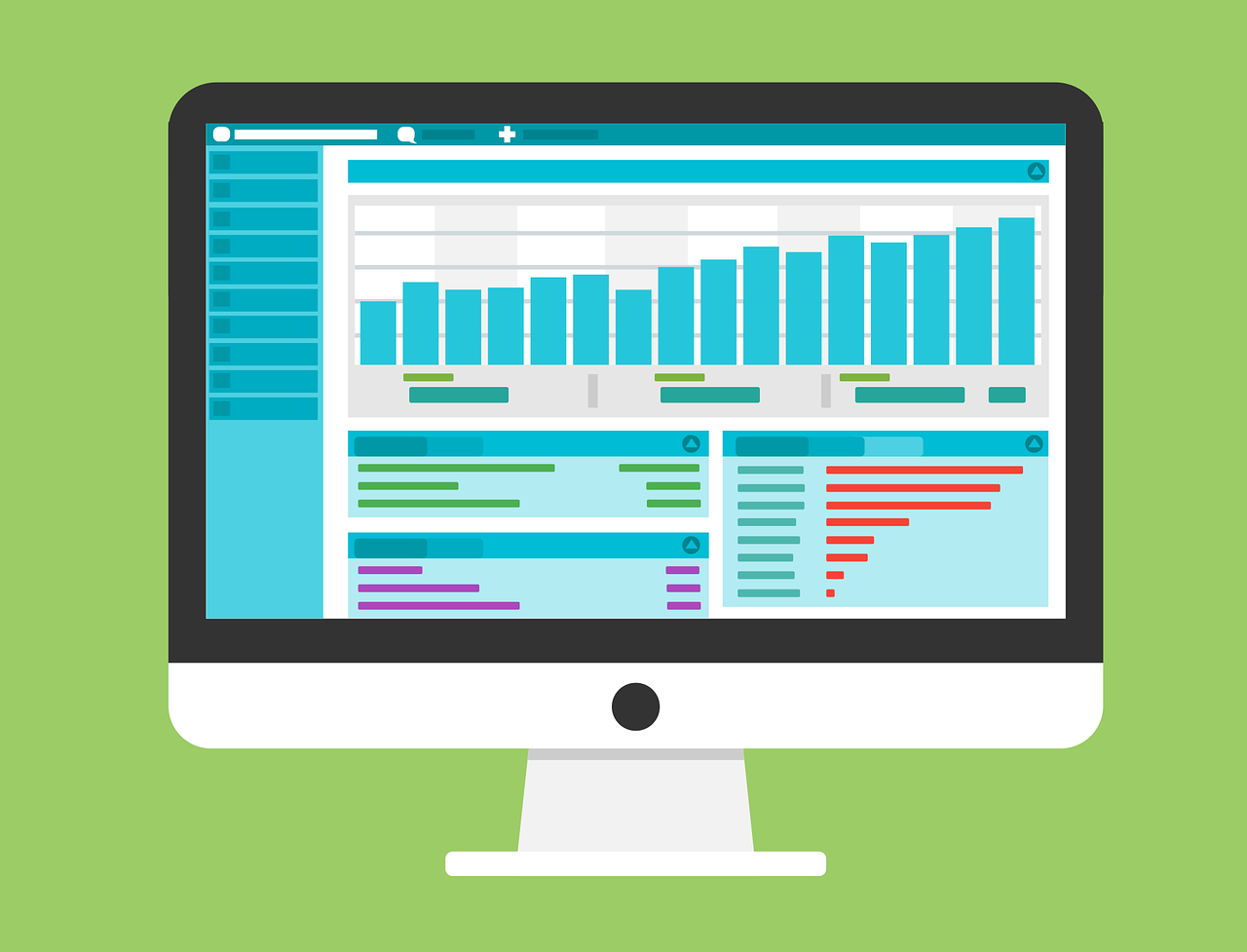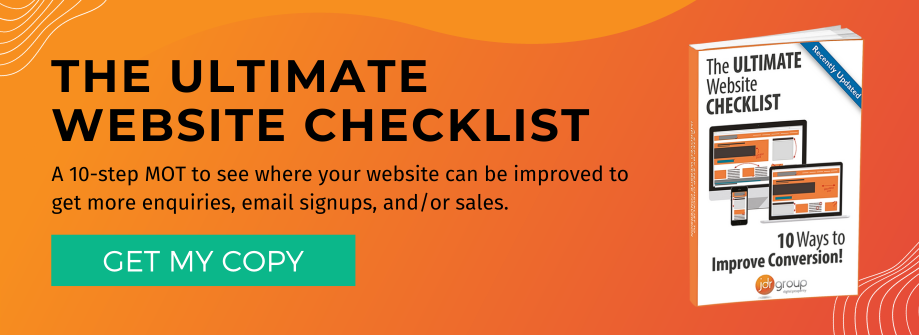The Fastest Way To Determine Your New Website Cost: A Step-By-Step Guide
by Will Williamson on 11-Oct-2023 13:00:00

A professional website that clearly communicates who your business is and what you offer is an essential sales asset for SMEs. Without a website, you won’t make many, if any, sales online, so in a sense your business website is priceless. So, how much should you reasonably expect to pay to create a new website that meets your specific needs while also staying within a sensible budget?
Looking at the big picture, you can pay almost anything you want for a website, from a few pounds to a few million pounds, so in this short step-by-step guide, we’ll walk you through the fastest and simplest way to estimate the cost of your new site so you can make informed decisions about your online presence.
1. Define Your Business Objectives For Your Website
The first step in determining how much you should pay is to clarify your objectives and what you want to achieve through your website. For example, some SMEs only need a basic brochure website to showcase their products or services, while others require more complex features, such as secure Ecommerce capabilities or custom applications. These objectives feed directly into a knowledge of the features and functionality you need from your site, which will have a significant impact on your total cost.
2. Choose Your Website Developer And Hosting Platform
Depending on the type of site you need, you may be able to build it yourself through an online website builder or open-source platform (e.g. WordPress), or it may be more cost-effective to outsource to a web development partner. For SMEs on a tight budget, all-inclusive Software As A Service platforms such as Squarespace, Wix, or Shopify, are growing in popularity, as these include hosting, web building tools, security, upgrades, and marketing features for the cost of a monthly subscription. If you’ve got more money to spend or have non-standard requirements for your site, we strongly recommend working with an agency partner. This will cost you more than using a self-build service but will always save money compared to investing in the tools, capital, and technical proficiencies needed to build a website in-house.
If you’re developing your website independently, hosting requirements will also influence your total cost. Shared website hosting is the most affordable option but may not be enough for high-traffic websites. In these cases, VPS or dedicated hosting will offer better performance and allow you to handle more traffic but will cost you more each month. Carefully consider the features and pricing of each builder or subscription service to determine which one is best suited for your needs, considering the level of technical knowledge required, your in-house resources, and how quickly you need your website.
3. Consider Your Design Requirements
The design and layout of your site play a crucial role in attracting visitors, making a good first impression, and providing the required user experience. Considerations include colour, font, and overall design style. While some businesses are still built from scratch out of raw code, it’s now more common for SMEs to use a premade template, which can be customised to your brand requirements. A completely bespoke design can be more complex and is usually more expensive compared to using a premade template, so when considering your options, be sure to consider the expectations of your target market and your industry norms.
4. Determine The Features You Need
Choosing the features you need embedded into your website is crucial in estimating your final cost. Features can range from a simple contact form interface to a fully equipped online shop, customer portal, chatbot system, or ticket booking system. The more features your website requires, the more costly and complicated the project becomes.
5. Content Creation And Writing
The most important part of your business website is your content. Your written and visual content will determine how visible your content is on Google searches, and whether or not you’re able to convert website visitors when they arrive, so it’s sensible to allocate at least 20% to 40% of your total website budget to content. Unless you have specific professional web content writing experience and the time to spare to create web content, it’s usually more cost-effective to outsource this function to an experienced content writer or agency. Web content writing is a very different proposition from articles and must be carefully optimised for search visibility and readability.
Content First Or Design First?
Some businesses like to determine the design and features of their site first before thinking about their content, but in many cases, it’s best to write your content first, including your home page and all your products and services categories, and then design your website around this material. This content-driven design approach gives your writers greater flexibility to create high-performing and optimised content for your business, without having to make compromises to accommodate the layout.
What Next?
At JDR Group, we help businesses create affordable, high-performance websites that are calibrated for SEO and conversion from the outset. Our services include all elements of web development and management, including design, hosting, upkeep, content creation, and marketing, so get in touch today for a discussion of your needs and a bespoke quote.
Image Source: Canva
- Inbound Marketing (SEO, PPC, Social Media, Video) (824)
- Strategy (363)
- Sales & CRM (195)
- Marketing Automation & Email Marketing (190)
- Business Growth (164)
- Website Design (160)
- Hubspot (138)
- Lead Generation (115)
- Google Adwords (98)
- Content Marketing (94)
- Conversion (48)
- Case Studies (47)
- News (47)
- Ecommerce (39)
- Webinars (34)
- SEO (24)
- AI (20)
- Events (19)
- Video (17)
- LinkedIn Advertising (15)
- Video Selling (15)
- Software training (13)
- Niche business marketing (11)
- The Digital Prosperity Podcast (10)
- Facebook Advertising (6)
- HubSpot Case Studies (5)
- December 2025 (10)
- November 2025 (6)
- October 2025 (17)
- September 2025 (16)
- August 2025 (14)
- July 2025 (14)
- June 2025 (5)
- May 2025 (19)
- April 2025 (15)
- March 2025 (13)
- February 2025 (13)
- January 2025 (8)
- December 2024 (2)
- November 2024 (4)
- October 2024 (21)
- September 2024 (4)
- August 2024 (8)
- July 2024 (14)
- June 2024 (16)
- May 2024 (25)
- April 2024 (15)
- March 2024 (18)
- February 2024 (5)
- January 2024 (10)
- December 2023 (6)
- November 2023 (10)
- October 2023 (13)
- September 2023 (12)
- August 2023 (14)
- July 2023 (13)
- June 2023 (14)
- May 2023 (15)
- April 2023 (13)
- March 2023 (14)
- February 2023 (13)
- January 2023 (15)
- December 2022 (13)
- November 2022 (6)
- October 2022 (8)
- September 2022 (22)
- August 2022 (15)
- July 2022 (13)
- June 2022 (16)
- May 2022 (14)
- April 2022 (16)
- March 2022 (17)
- February 2022 (11)
- January 2022 (8)
- December 2021 (6)
- November 2021 (7)
- October 2021 (11)
- September 2021 (10)
- August 2021 (7)
- July 2021 (7)
- June 2021 (4)
- May 2021 (4)
- April 2021 (1)
- March 2021 (3)
- February 2021 (5)
- January 2021 (4)
- December 2020 (7)
- November 2020 (6)
- October 2020 (5)
- September 2020 (9)
- August 2020 (18)
- July 2020 (17)
- June 2020 (17)
- May 2020 (10)
- April 2020 (21)
- March 2020 (24)
- February 2020 (21)
- January 2020 (12)
- December 2019 (23)
- November 2019 (12)
- October 2019 (14)
- September 2019 (16)
- August 2019 (15)
- July 2019 (13)
- June 2019 (6)
- May 2019 (8)
- April 2019 (4)
- March 2019 (2)
- February 2019 (2)
- January 2019 (2)
- December 2018 (3)
- November 2018 (24)
- September 2018 (11)
- August 2018 (9)
- June 2018 (3)
- May 2018 (6)
- April 2018 (14)
- March 2018 (12)
- February 2018 (16)
- January 2018 (15)
- December 2017 (15)
- November 2017 (18)
- October 2017 (23)
- September 2017 (19)
- August 2017 (28)
- July 2017 (27)
- June 2017 (25)
- May 2017 (18)
- April 2017 (17)
- March 2017 (16)
- February 2017 (17)
- January 2017 (14)
- December 2016 (21)
- November 2016 (27)
- October 2016 (25)
- September 2016 (16)
- August 2016 (20)
- July 2016 (19)
- June 2016 (14)
- May 2016 (20)
- April 2016 (24)
- March 2016 (22)
- February 2016 (28)
- January 2016 (27)
- December 2015 (28)
- November 2015 (19)
- October 2015 (9)
- September 2015 (12)
- August 2015 (5)
- July 2015 (1)
- June 2015 (10)
- May 2015 (3)
- April 2015 (11)
- March 2015 (14)
- February 2015 (15)
- January 2015 (12)
- December 2014 (2)
- November 2014 (23)
- October 2014 (2)
- September 2014 (2)
- August 2014 (2)
- July 2014 (2)
- June 2014 (7)
- May 2014 (14)
- April 2014 (14)
- March 2014 (7)
- February 2014 (2)
- January 2014 (7)
- December 2013 (9)
- November 2013 (14)
- October 2013 (17)
- September 2013 (3)
- August 2013 (6)
- July 2013 (8)
- June 2013 (4)
- May 2013 (3)
- April 2013 (6)
- March 2013 (6)
- February 2013 (7)
- January 2013 (5)
- December 2012 (3)
- November 2012 (2)
- September 2012 (1)
Subscribe by email
You May Also Like
These Related Blogs

The Future Of Business Websites – And Why Owning A Perfect Lead Generation Website Just Got Easier & Cheaper
Creating and sustaining a business website can be difficult, time consuming and expensive. Getting a website online is one of the major tasks involved …

Why 2021 is The Best Time To Start Using HubSpot
2020 was quite a year and, with some hope on the horizon for 2121 there is plenty to play for. One of the most important moves that you can make – eve …

8 Questions To Ask Your Web Design Company
When it comes time to make a decision about which company to choose to build your website, it’s not a decision to be taken lightly. Getting to know yo …




